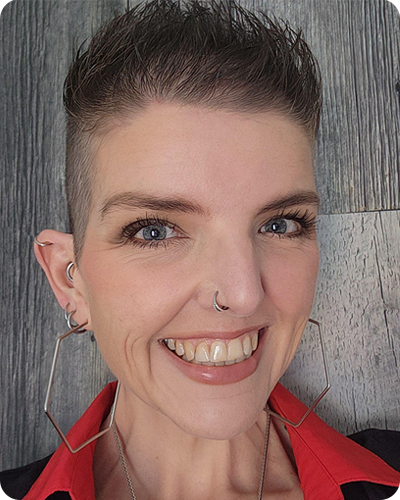This resource was published in 2022. The data may be out of date.
Estimated reading time: 6 minutes
From stop gap to solution
Twenty-something years ago, after Y2K did not result in the collapse of the modern world, my university campus general practitioner proposed something radical: while I was waiting for an appointment with specialized mental health services, I could access a newly-developed service that would offer Cognitive Behavioural Therapy (CBT) to me online and from the safety and comfort of my dorm room. More personalized and responsive than simply following along in a book, this interactive website taught me about common cognitive distortions and guided me through exercises to help identify my own patterns as well as combat their negative effects.
It was a decent stop gap, giving me something to keep me going while I waited to speak to a human, but in the days of flip phones, and long before touch screens, mobile data and video chat, the technology was fairly limited.
Fast-forward to February 2020 and I could access nearly the whole world from the palm of my hand, but still conventional wisdom had it that the plush and calming offices of our psychiatrists and therapists were the only places that we could truly get well. There is nothing like face-to-face communication, right?
Then, March 2020. Not a lot of things improved due to the COVID-19 pandemic – and general mental health most certainly did not improve (it suffered, overall) – but one big improvement has been changing the mindset that virtual mental healthcare (e-mental health) is second-rate care. E-mental health services existed before the pandemic, but their availability and use skyrocketed by as much as 3500% as the mental health impacts of the increased isolation hit, and the in-clinic world shut down.
Back then, anxiety-fuelled changes left us resisting the switch and looking only at the negatives, but I see the provision of e-mental health as a definite positive. Do I lament that I cannot look my care team in the eye? That they can’t see me in person and interpret my body language as effectively? That it is hard, in my three-bedroom apartment, to find a safe and private space to have my sessions? Maybe a little. But those drawbacks are far outweighed by three main advantages: cost, access, and stigma reduction.
Three big advantages of e-mental health
1. Cost
E-mental health doesn’t require a brick-and-mortar office for the clinician and increases the number of clients any one provider can connect with, reducing their overhead costs. This often (though, buyer beware, not always!) translates to reduced costs to their clients. E-mental health support is often much cheaper than in-person, making it accessible to more people.
2. Access
Traditional in-person therapy also imposes constraints based on location and time. You have to physically go to a therapist’s office, fight through traffic and find parking (or deal with public transit), wait your turn, and then repeat the process to return to life (work, school, family life) usually within regular business hours. There are many folks who do not have the time for this procedure (including me! And I am privileged to work in a job where I get sick and vacation leave and actually have a car) With e-mental health, you can access your session from literally wherever you are and often even have the option of texting or e-mailing your therapist between sessions, should you need to.
3. Stigma
The final, and I think most important, way that e-mental health improves upon face-to-face therapy, is in reducing stigma. When I received that first referral to mental health services from my campus doctor, I was MORTIFIED at the idea that someone would see me entering the building and immediately know that I had mental illness. That fear – that stigma – is what prevented me from getting the help I desperately needed for so long. And then the thought of having to ask my boss for time off to go to therapy was OUT OF THE QUESTION. E-mental health is totally private and confidential, being accessed from any phone or device, and can be accessed during your lunch break, before or after class or work (due to the beauty of flexible therapists and time zone trickery!) which strikes down the barriers to receiving care that stigma tries to throw up.
It still takes a great deal of courage to access mental health support of any kind due to stigma but seeing consistent advertising and influencers on social media promoting these services serves to further normalize the use of e-mental health because it is more cost-efficient and accessible than in-person services (see points 1&2 above) to more people than ever before.
An effective solution
Now, e-mental health has not been researched as much as in-person healthcare (obviously, since it much newer) and certainly e-mental health is not suitable for everyone. For someone struggling with severe mental illness – like me in the throes of suicidal depression or acute mania – e-mental health may not be appropriate because it cannot provide proximal urgent care (however, more and more services are emerging that provide life-saving crisis care).
For those who are less tech-savvy or less comfortable in the virtual environment, you may find that you are more comfortable with in-person care. And if you are in a more remote region where technological access is an issue, e-mental health may not be as convenient as it is in larger urban centers. But for those who can connect and want to take control of their mental illness – or those who need help bolstering their mental health – e-mental healthcare might be just the ticket. All you can do is try to see if it is for you and remember: any mental health care is better than none.
Studies show that e-mental health can be as effective as face-to-face treatment, particularly since it is so much more accessible by the people needing the help. In the traditional face-to-face mental health system, it can be difficult to locate appropriate treatment, get urgent care (waiting lists – if you know, you know!), and find a service you can afford. Let’s not forget about stigma. As mentioned above, e-mental health interventions reduce these obstacles, allowing anyone to access less expensive, quickly accessible, and confidential services. Still not sure what service to access? The MHCC has you covered with a two-pager on how to make an informed decision here!
Having my psychiatry and therapy appointments shifted to the virtual context has been a huge positive that has come out of the pandemic for me, and I sincerely hope that we never go back to the in-person default that we had before. I have so much less stress now that I can get help virtually more accessibly, efficiently, and with less stigma than ever before. I am much more able now to take care of my mental health and treat my mental illness. The online CBT courses that were cutting edge back when the Spice Girls were “it” were limited, but it was initiatives like that one which put e-mental healthcare into the hands of ordinary people and led to the more comprehensive care that we have now. I’m excited to see where we are 20 years from now…virtual reality perhaps? We’ll see…






